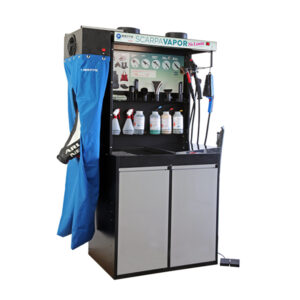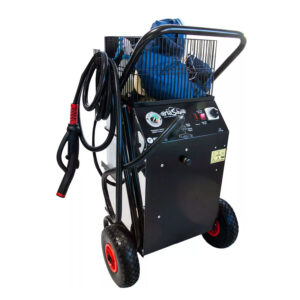We share this summary of a scientific publication of 2021, where scientific tests demonstrate the effectiveness of ozone to inactivate the virus Covid-19.
ARTICLE of Emerging Microbes & Infections
The extremely rapid spread of the SARS-CoV-2 has already resulted in more than 1 million reported deaths of coronavirus disease 2019 (COVID-19). The ability of infectious particles to persist on environmental surfaces is potentially considered a factor for viral spreading. Therefore, limiting viral diffusion in public environments should be achieved with correct disinfection of objects, tissues, and clothes. This study proves how two widespread disinfection systems, shortwavelength ultraviolet light (UV-C) and ozone (O3), are active in vitro on different commonly used materials. The development of devices equipped with UV-C, or ozone generators, may prevent the virus from spreading in public places.
The World Health Organization (WHO) declared SARS- CoV-2 a pandemic on 11th March 2020. As of the 3rd November 2020, there have been over 46.8 million confirmed COVID-19 cases and more than 1 million reported deaths.
Here, two widespread disinfection systems (shortwavelength ultraviolet light (UV-C) and ozone (O3)) are investigated for their efficacy. Ozone, a highly oxidizing gas, is normally used for the disinfection of municipal water, foods, and surfaces. Ozone is highly corrosive to equipment and is lethal to humans with prolonged exposure at concentrations above 4 ppm.
In the experimental setting aimed at evaluating the ozone activity, the Ozonext Defender 10 (Cea S.p.A., Lecco, Italy) was adapted to be used inside a system composed of a plexiglass chamber containing the contaminated samples connected to an ozone detector, to monitor gas concentration (part per million, ppm) throughout all the experimental sessions. Firstly, the six materials were placed into a 24-well plate and tested using 0.2 ppm, a gas concentration non-toxic to humans, for 2 h, as this time point replicates the longest treatment which can be selected on commercially available ozone generators. This would allow, possibly, the sanitization of places without closing access to the public. Results showed that complete disinfection was obtained only on fleece sample (>99.9%), while a less marked reduction was observed on the other materials (96.8% on gauze, 93.3% on wood, 90% on glass), with the worst data was observed on plastic (82.2%). Unexpected toxicity was observed on back titration experiments on Vero E6 for wool specimens, maybe due to chemical pre-experimental sterilization. Thus, it was not included in the subsequent experiment. To investigate a possible use of ozone for quick sanitization of closed places in the absence of people, a higher ozone concentration (4 ppm) was evaluated at different times of exposure: 30, 60, 90, and 120 min. The results of titer reduction experiments showed that the effect on glass and gauze was maximum (a 98.2% and 9.8% viral titer reduction, respectively) after 90 min of exposure, while 120 min are required to sanitize fleece almost completely (99.8%), and plastic of 90% (Tab. S3). Reduction of infectious titers, reported in tables S2 and S3, describes the reduction of infectious capability of the virus adsorbed on different materials over the time. Results are obtained by comparison between O3-treated virus and untreated virus, left at room temperature up to 120 min. Data showed how also untreated virus stocks were affected by a lowering of infectivity over time, at different time points. This observation does not disagree with literature data on SARS-CoV-2 persistence, in our experimental conditions wood cannot be disinfected better than 93.3%, a result already obtained after a 30 min treatment. This study demonstrated for the first time the inactivation of SARS-CoV-2 on different materials under UV-C irradiation and ozone exposure. Unexpectedly, the higher ozone concentration tested in our experiments did not result in better decontamination of surfaces compared to lower one, except for plastic.
Source: https://www.ncbi.nlm.nih.gov/pmc/articles/PMC7872580/




